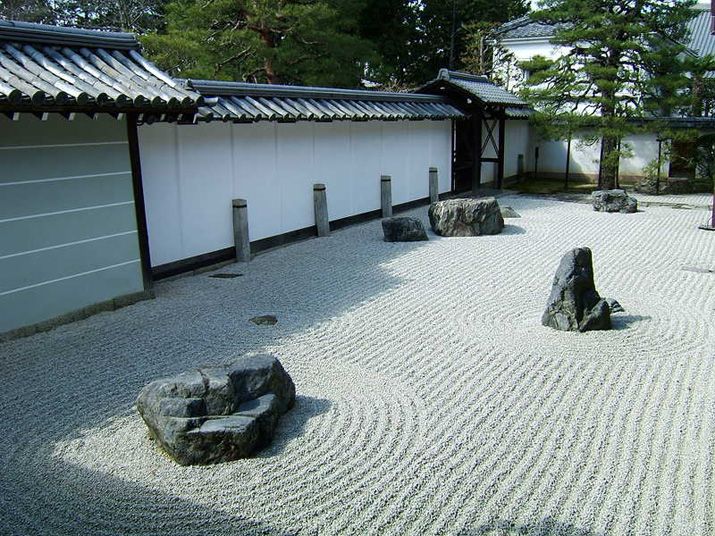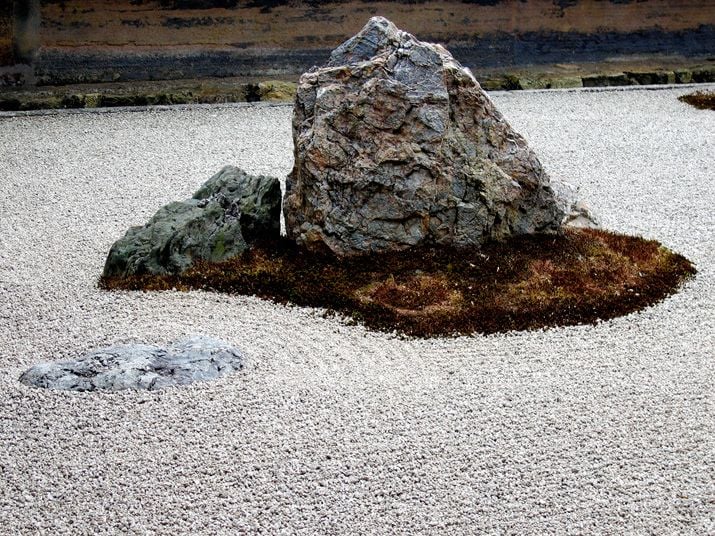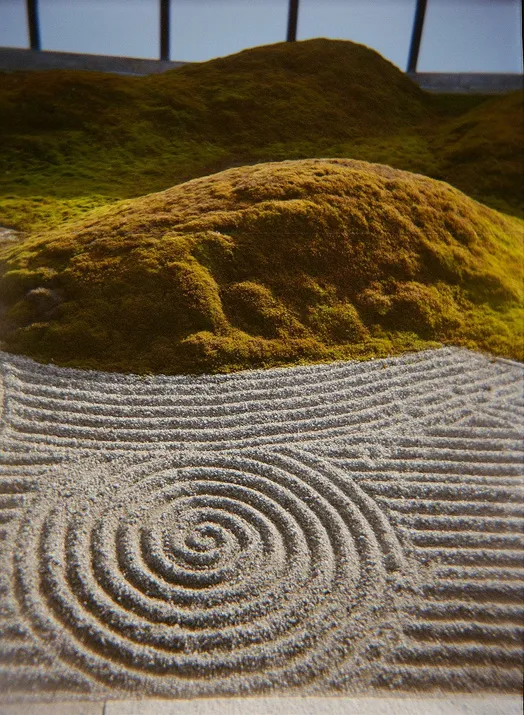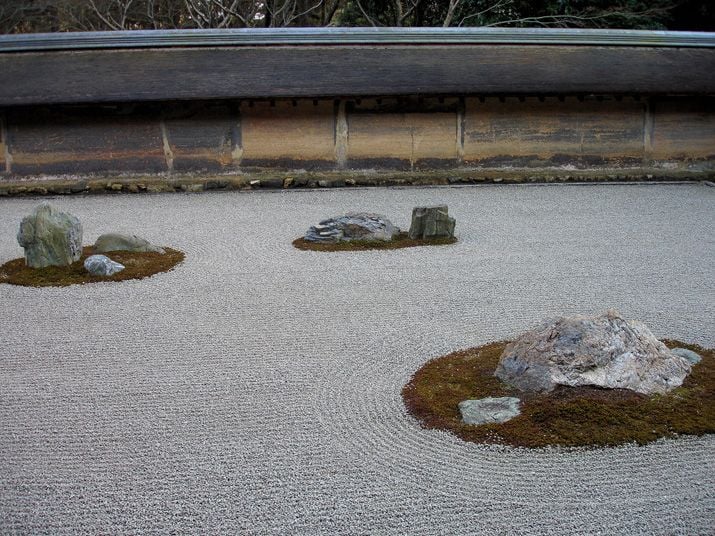The Tranquil Zen Garden of Kyoto
With Zen rocks strategically placed in carefully raked white sand, the Ryoan-ji garden evokes peace and beauty
/https://tf-cmsv2-smithsonianmag-media.s3.amazonaws.com/filer/lifelist-zen-garden-631.jpg)
Zen rock gardens, or karesansui (translated as "dry-mountain-water"), originated in medieval Japan and are renowned for their simplicity and serenity. The most famous of these can be found in Kyoto at the 15th-century Ryoan-ji, the Temple of the Peaceful Dragon. "While there are other similar gardens of great beauty," says James Ulak, curator of Japanese art at Smithsonian's Freer and Sackler galleries, "Ryoan-ji remains the ur-site of the type—powerful, abstract, Zen Buddhist landscapes designed to invoke deep meditation."
Measuring 98 by 32 feet, the Ryoan-ji garden is about the size of a tennis court and is composed solely of 15 large and small rocks, some encircled by moss, grouped in five clusters on a bed of carefully raked white sand. From a distance, the rocks resemble islands, the sand a tranquil sea.
In 2002, a research team at Kyoto University claimed to have cracked the Zen code. Relying on computer models, they found that the garden's rocks—when viewed from the proper angle—subconsciously evoke the tranquil outline of a branching tree. Over the centuries, however, visitors have discerned images as diverse as a tigress escorting her cubs across water and the Chinese character for "heart" or "mind." Since the anonymous designer left no explanation, the garden's exact meaning remains a mystery, which no doubt contributes to its enduring allure.
What will you see?
Planning Your Next Trip?
Explore great travel deals
Smithsonian magazine participates in affiliate link advertising programs. If you purchase an item through these links, we receive a commission.



